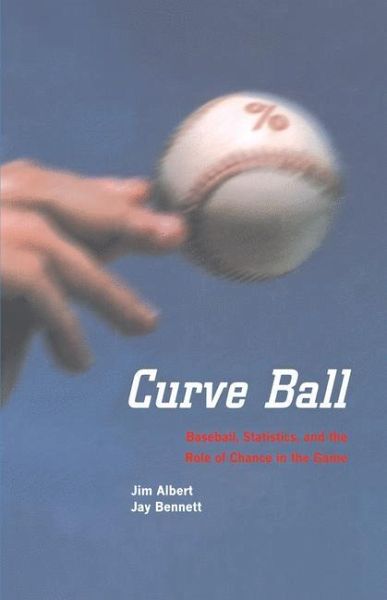
Curve Ball
Baseball, Statistics, and the Role of Chance in the Game
Versandkostenfrei!
Versandfertig in 6-10 Tagen
38,99 €
inkl. MwSt.
Weitere Ausgaben:

PAYBACK Punkte
19 °P sammeln!
The intent of this book is to look at baseball data from a statistical modeling perspective. There is a fascination among baseball fans and the media to collect data on every imaginable event during a baseball game and to use this data to try to understand characteristics of the game. The problem is that patterns in baseball data are difficult to detect due to the inherent chance variation that is present. This book addresses a number of questions that are of interest to many baseball fans. These issues include how to rate players, predict the outcome of a game or the attainment of an achievement, making sense of situational data, and deciding the most valuable players in the World Series. This book will be directed to a general audience of baseball fans and does not assume that the reader has any prior background in probability or statistics, although a knowledge of high school abgebra will be helpful.
In its formative years, from the 1970s through the 1990s, sabermetrics was p- marily an amateur undertaking. Publications were aimed at a relatively small audience of baseball fans. To be sure, this ever-growing group of aficionados brought a lot of sophistication to baseball analysis, and were constantly looking for statistical insights beyond the listings of the top ten batters found in popular newspapers and magazines. But their influence on the baseball profession was very limited. A few consultants like Craig Wright developed temporary relati- ships with various teams, but none were able to stay long enough to create a p- manent sabermetrician staff position. (See Rob Neyer's November 11, 2002, arti- 1 cle on ESPN. com. ) All of this changed, however, in 2002 with the hiring of Bill James by the Boston Red Sox. With that move, we have seen the admittance of the foremost proponent of sabermetrics into the top echelon of professional ba- ball management. The art and science ofcareful statistical analysis, it now seems, had made it into the big leagues. Since the publication of the first edition of Curve Ball in 2001, we have been overwhelmed by the positive responses from readers and critics. We're pleased with the reception, of course, but we don't want to rest on our laurels. Like a pitcher refining his repertoire, we've revised, expanded, and updated the book for its publication in this paperback edition. Several readers and critics took us 1 http://espn. go. com/mlb/columns/neyer_rob/1456664.














